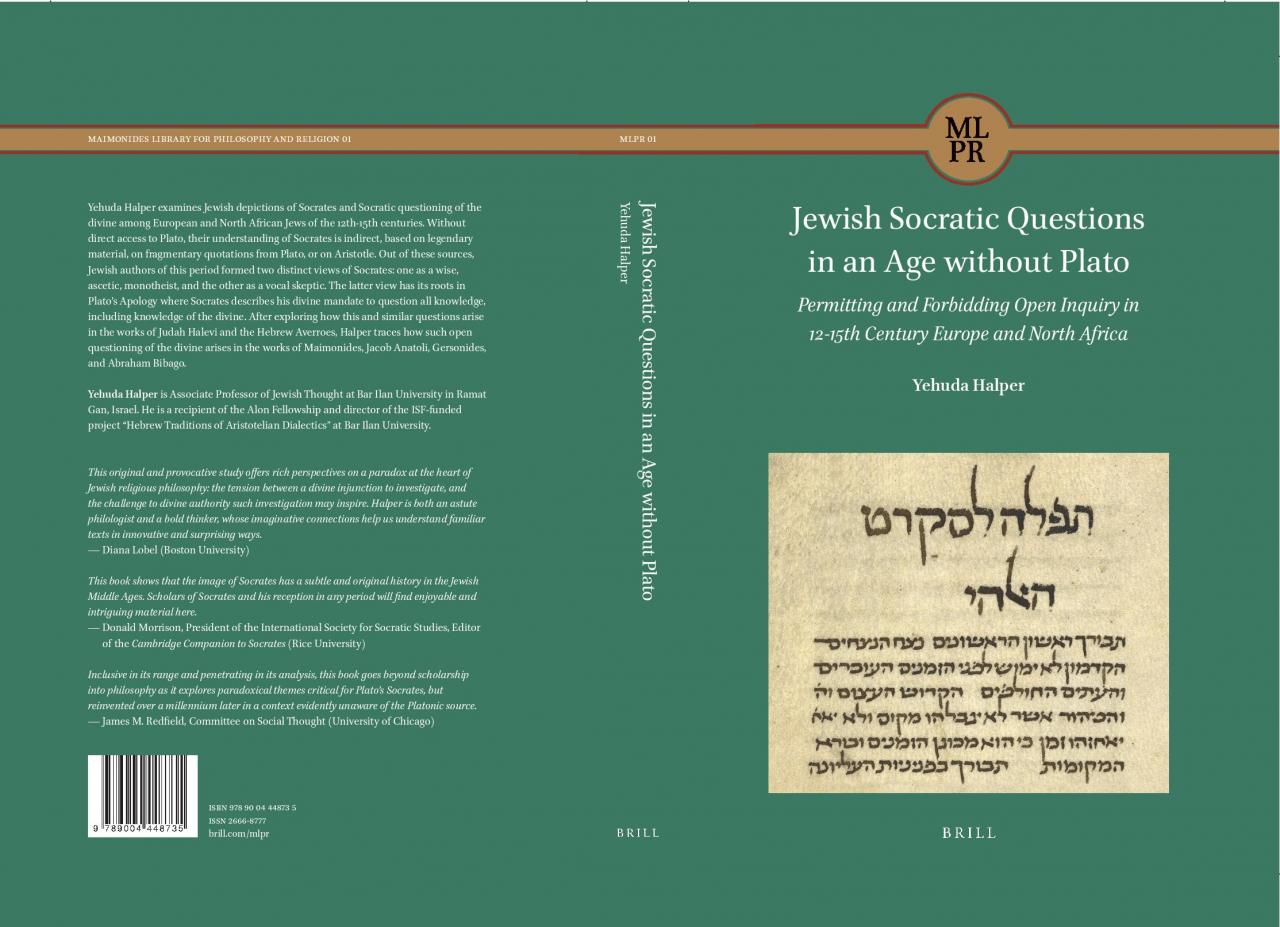Publications
-

-
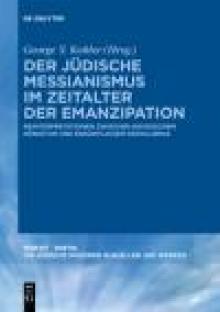
Der jüdische Messianismus im Zeitalter der Emanzipation Reinterpretationen zwischen davidischem Königtum und endzeitlichem Sozialismus
SummaryJewish Messianism in the Age of Emancipation: Reinterpretations between Davidic Kingship and Eschatological Socialism
During the first half of the 19th century, traditional Jewish conceptions of the Messiah underwent a profound reinterpretation. In place of the vision of a messianic king, new ideas arose about an ideal world. G. Kohler demonstrates that this new reading of Jewish messianism did not originate from the works of the philosopher Hermann Cohen, but instead, had already arisen during the 1840s.
-
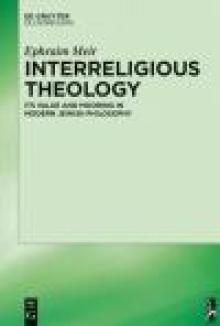
Interreligious theology its value and mooring in modern Jewish philosophy
SummaryThis book is the first greater attempt to construct a dialogical theology from a Jewish point of view. It contributes to an emerging new theology that promotes the interrelatedness of religions in which encounter, openness, and permanent learning are central. Meir analyses and critically discusses the writings of great contemporary Jewish dialogical thinkers and argues that the values of interreligious theology are moored in their thoughts.
-
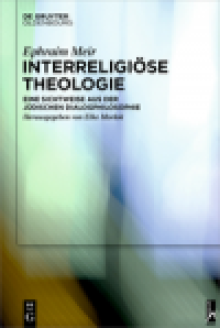
Interreligiöse Theologie. Eine Sichtweise aus der jüdischen Dialogphilosophie.
SummaryDas Buch stellt den ersten umfassenden Versuch dar, eine dialogische
Theologie aus jüdischer Sicht zu konstruieren. Diese fördert eine Perspektive, in welcher die Wechselbeziehungen zwischen den Religionen, Begegnung und Lernen eine zentrale Rolle spielen. Dabei werden vor allem die Impulse aus der jüdischen Dialogphilosophie wahrgenommen und für eine interreligiösen Dialog fruchtbar gemacht. Meir setzt sich kritisch mit den großen jüdischen dialogischen Denker auseinander und argumentiert, in wieweit die Werte der heutigen interreligiösen Theologie in ihren Schriften verwurzelt sind. Vor allem praxisrelevante Standpunkte werden hierbei hervorgehoben und in einem multiperspektivischen Dialog mit unterschiedlichen Religionen angewandt. Grundlage für solch eine Vorgehensweise ist seine Konzeption der "Trans-Differenz", wobei ein ständiger dialogischer Lernprozess unter Einbezug, Anerkennung und gleichzeitiger Überbrückung religiöser Unterschiede angestrebt wird. Diese Sichtweise auf die Einzigartigkeit der Religionen und ihre wesentliche Verbundenheit und Bezogenheit auf einander eröffnet neue Perspektiven für eine interreligiöse Theologie, welche in diesem Buch vorgestellt wird.
-
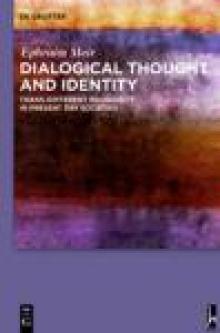
Dialogical Thought and Identity Trans-Different Religiosity in Present Day Societies
SummaryIn discussion with Martin Buber, Franz Rosenzweig, Abraham Joshua Heschel, Franz Fischer and Emmanuel Levinas, Ephraim Meir outlines a novel conception of a selfhood that is grounded in dialogical thought. He focuses on the shaping of identity in present day societies and offers a new view on identity around the concepts of self-transcendence, self-difference, and trans-difference. Subjectivity is seen as the concrete possibility of relating to an open identity, which receives and hosts alterity. Self-difference is the crown upon the I; it is the result of a dialogical life, a life of passing to the other. The religious I is perceived as in dialogue with secularity, with its own past and with other persons. It is suggested that with a dialogical approach one may discover what unites people in pluralist societies.
-

-
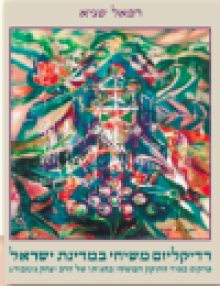
Messianic Radicalism in Israel
SummaryIntroduction
The present dissertation examines the meaning of messianic rectification in the thought of contemporary kabbalist and hasidic teacher, Rabbi Yitzchak Ginsburgh, both in its influence on the Israeli neo-hasidic movement, and in its relationship to extreme right-wing, Israeli nationalistic movements at the close of the twentieth century and the beginning of the twenty-first.
The study illustrates how Ginsburgh merges two spheres of thought: Habad hasidism’s messianic activism, based upon the teachings of the seventh and last Lubavitcher Rebbe, R. Menachem Mendel Schneerson (subsequently MMS), and that of the religious-Zionist movement, particularly the thought of R. Zvi Yehudah Kook and his definition of the state of Israel as the “onset of the redemption.” Ginsburgh’s broad and enthralling combination of these two worlds results in a vision of a Jewish, messianic sovereignty in the land of Israel – a goal so central to his thought that the numerous processes of “rectification” with which he is concerned – that of the soul, the individual, the consciousness, society, the military and the state – are all seen to facilitate the realization of his utopian dream.
Ginsburgh’s thought has produced an impressive amount of material: books, pamphlets, lectures, and websites – a body of work still in development. A careful analysis of this material reveals him to be a systematic thinker, who uses of a small number of fixed, a priori models to explain the process of rectification in all its manifestations. The underlying principles of Ginsburgh’s thought are generally taken from the world of Kabbalah, Hasidism, geometry, physics and mathematics. Some of the central themes are: the unity of opposites; the tri-fold processes of suppression-separation-amelioration (הכנעה-הבדלה-המתקה); point-line-area; point-sefirah-partzuf; the kabbalistic terms akudim, nekudim, brudim; and the decimal system.
Human Rectification
In this section, I outline Ginsburgh’s hasidic spiritual anthropometry with its basic division of the soul into higher consciousness, intellect, feelings and actions. I further present a critical survey of academic writings on the Habad concept of man’s two souls – the animal and the divine – and show that while R. Ginsburgh accepts this ontological distinction, he nevertheless regards the human being as a single entity within which these two forces struggle.
Being that the rectification of the human consciousness plays a central role in the messianic redemption, I examine the structure of the soul according to Ginsburgh, which is defined as containing two types of forces: those of the unconscious and of the conscious mind. Unconscious forces are further divided into subconscious forces and supra-conscious ones; the latter being revealed in the divine soul, and which unite the Jew to his Divine source. Subconscious forces represent the primitive powers of the animal soul. Thus, Ginsburgh’s model is basically that of transpersonal psychology, which claims that the supra-consciousness connect a human being to God.
According to Ginsburgh, the messianic era will herald a new type of awareness, which he terms “natural consciousness” (muda’ot ha-tivi’it) composed of a paradoxical integration of ego-awareness and Divine consciousness, in which the self is annulled in the light of Divine revelation, the outcome being the eternal life of the soul within the body.
Ginsburgh formulates a concept of the “complete man” (adam ha-shalem), following Habad’s anthropological and psychological principles, in a systematic, schematic, logical and discursive fashion. To Ginsburgh, the paradigmatic “complete man” is the mass-murderer Baruch Goldstein, who is claimed to have fulfilled the commandments with total self-sacrifice and voluntary martyrdom for the honor of God, and who annihilated himself in the sanctification of God’s name in order to hasten the final redemption.
Ginsburgh, however, does not suffice himself with a theoretical anthropological-psychological-hasidic model of the complete man, but rather, seeks to develop a practical, universally applicable, hasidic psychotherapy. In other words, a messianic rectification of the individual resulting from the application of a hasidic psychotherapy. I therefore present the various psychotherapeutic practices developed by Ginsburgh, largely based upon his original interpretation of the Beshtian concept of repression-separation-amelioration. The uniqueness of this practice is that it sets the “Other” at the heart of the therapy, as opposed to Christian ethics that places the self at the center. Thus, Ginsburgh breaks new ground in therapeutic practices, which are already finding wider application in the field of clinical psychology.
The Rectification of Society
In this section, I discuss Ginsburgh’s vision of the complete transformation of Israeli society as a necessary precursor toward the establishment of a Jewish, messianic monarchy. To Ginsburgh, the secular government, with its values of democracy and equal rights, lacks a spiritual, religious foundation. Ginsburgh uses the historiosophical model of “point-line-area” to explain the development of Israeli secular society. Using this model, he deals with two themes: the rampant secularization of Israeli society, which he blames on the Zionist movement and the reciprocal relationship between Zionism, messianism and the State of Israel.
I further examine Ginsburgh’s radical claim that the Zionist movement has fulfilled its purpose and should subsequently disappear from the Israeli socio-political scene, in order to make way for a religious, messianic monarchy that will lay the ground for the descent of the Divine Presence (Shekhinah) to the lower levels. I demonstrate how Ginsburgh’s thought breaks new ground, both within the Habad movement and in that of Religious Zionism, in light of his assertion that the process of redemption that began with the establishment of the State of Israel has reached an impass, and that its renewal demands a new line of activity that will quickly bring about the Messianic era, by means of a complete revolution within both the collective consciousness of Israeli society, as well as that of the entire government body. In other words, I reveal Ginsburgh’s position as revolutionary, messianic and utopian, directed toward hastening the final redemption.
Whereas in the eyes of the Israeli public, Ginsburgh represents a racist ideology that distinguishes between Jew and gentile, and between the Jewish and Arab sectors of society (based upon the anthropological and psychological principles discussed above), a tension, nonetheless, does exist in his work – between the universal approach of R. Menachem Mendel Schneerson concerning non-Jews and the particularistic approach that he himself applies primarily toward Israel’s Arab population. Schneerson developed a universal, messianic philosophy, based upon the claim that God never created anything in vain; a fact which has motivated some of Schneerson’s followers to initiate projects aimed at convincing gentiles to observe the “seven commandments of the children of Noah”; thus including them in the building of a “lower dwelling” that will hasten the redemption.
Ginsburgh accepts Schneerson’s position and the theoretical need for the fulfillment of the “seven commandments,” yet he does not adopt Schneerson’s activism in this area, such as by adjuring his followers to try and convince Israel’s non-Jewish population of their obligations. Rather, his approach to non-Jews is subordinant to the political theory of the radical right, with its goal to remove all non-Jews, particularly Arabs, from Israel’s sovereign borders. Ginsburgh is known for his moderate degree of political activism, which he believes would cause Israel’s current Arab population to seek immigration beyond its borders. He sees this goal as the task of two groups: Israel’s Jewish population and the Israeli government. That is, the obligation of the Jewish populace to refrain from any economic involvement with Arabs, such as through the use of the latter’s good or services, and the obligation of the government to deny Israeli non-Jews equal rights as citizens, including various forms of government support, such as pensions and financial assistance. This type of “passive-activisim” is aimed at removing Israel’s Arab population from within its borders, and thus speeding the messianic redemption.
Ginsburgh conceptualizes a “collective feminine consciousness” which expresses the powerful desire of the Jewish people to unite with God. The moment of union with God will bring the Jewish people to their complete and true redemption, since this causes the birth of a “male child” – which is the final redeemer.
I explain this concept of “son-ship” as consisting of two stages: the first is allegorical, rather than physically embodied. In this case, the concept refers to an internal mode of worship created by the collective-messianic consciousness of society. In the second case, however, the “male child” or “Son of God” is seen as the Messiah himself – a physical embodiment, or external hypostasis existing within history. In the first case, Ginsburgh bases himself upon the hasidic tradition that sees a correspondence between the Zaddik and an inner process of the Jewish soul. The second case is original to Ginsburgh, however, as it views the Zaddik (or the Son of God) as not merely as a physical entity that serves as a channel between God and society (as per hasidic doctrine), but as an objective redeemer – the Messiah – whose arrival is predicated upon a transformation in the collective consciousness of Israel. Ginsburgh’s position differs from that of Habad, by defining the Zaddik-king as the Son of God. Whereas Moshe Idel claims that Hasidism does not regard the Son of God in messianic terms; Ginsburgh does regard the Son of God as the Messiah.
Christian theology does consider Jesus as the Son of God, at once both divine and human in nature. He is one of the components of the Holy Trinity, as well as the Messiah, who will bodily return to this world to redeem humanity. As the Nicene-Constantinopolitan Creed states: “And in one Lord Jesus Christ, the only-begotten Son of God, begotten of the Father before all æons, Light of Light, very God of very God, begotten, not made, being of one substance with the Father; by whom all things were made; who for us men, and for our salvation, came down from heaven, and was incarnate by the Holy Ghost of the Virgin Mary, and was made man…”
Ginsburgh’s second approach is somewhat close to that of Christianity, in that he views the Son of God as the earthly Messiah. He differs, however, in that whereas Christianity requires patience and faith in the Second Coming, Ginsburgh propounds an active, theurgic process, which influences God to speed the “birthing process” and subsequent redemption. Furthermore, whereas Christianity regards Jesus Christ as a human being, first born into this world, and only afterward internalized in the collective Christian consciousness as the Messiah, Ginsburgh sees the arrival of the Son of God as resulting from the collective, messianic consciousness of the nation, which acts as the catalyst for redemption. According to Ginsburgh, the Jewish nation must make special efforts to reach a higher level of consciousness, in preparation for the collective messianic consciousness. In other words, whereas in Christianity, the Son of God is an objective hypostasis, in Ginsburgh’s thought, the Son of God is first of all an allegory for a state of consciousness, and only then, a flesh and blood manifestation.
The Rectification of the State – The Jewish Messianic Monarchy
In this section, I discuss the path set forth by Ginsburgh to annul the Israeli democratic regime. While Ginsburgh does not propose any sort of armed revolution or civilian putsch, and decries all forms of violence in the transformation of the Israeli government, he does suggest a combination of active and passive activities whose goal is complete separation from Israel’s democratic, secular society. To this end, he advocates the establishment of numerous institutions alternative to and independent of those of the state, run according to Jewish law and by administrators faithful to the messianic revolutionary spirit. On another front, he calls upon Israeli soldiers and officers to refuse to obey orders in many instances.
I suggest that Ginsburgh’s vision of a Jewish, utopian, messianic monarchy in Israel is founded upon two complimentary paradigms: (1) The concept of the messiah, particularly as articulated by MMS and (2) the national-religious Zionism of R. Zvi Yehudah Kook, which views the state of Israel as the crucial step in the messianic redemption.
R. Ginsburgh devotes intense intellectual effort to formulating the image of the “King Messiah,” as the head of the messianic monarchy. Here too, he combines two independent traditions: the Maimonidian, which envisions the Messiah as a philosopher-king, and the Habad-hasidic tradition, which envisions the Messiah in terms of the hasidic Zaddik; in Ginsburgh’s terms, as embodied in the historical persona of MMS Through this fascinating combination, R. Ginsburgh creates an image of the Messiah whose external authority and jurisdiction – such as the right to establish a Jewish monarchy or to initiate public commandments, such as the waging of war, the destruction enemies, and building the Third Temple – are all based upon Maimonidies’ criteria, yet whose inner cognitive, emotional, mystical and charismatic aspects are all paradigmatic of the hasidic Zaddik.
In conclusion, Yitzchak Ginsburgh’s unique contribution to the history of Habad Hasidism lies in his radical political interpretation of the MMS’s behest to “create a dwelling-place for the divine presence in the lower worlds,” which, to his understanding, entails the collapse Israel’s secular democracy and the establishment of a Jewish messianic sovereignty over the entire territory of the Promised Land. Thus, Ginsburgh strays far from classic kabbalistic-hasidic-historical thought, whose adherents, for the most part, were not overly concerned with political realities. Ginsburgh is perhaps the first hasidic, or neo-hasidic thinker to formulate his own utopian, messianic vision – a Jewish, messianic monarchy – in contemporary political terms.
-
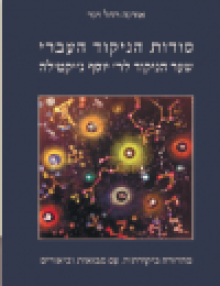
The gate of punctuation: Joseph ben Abraham Giqatilla / critical edition
SummaryThe gate of punctuation : Joseph ben Abraham Giqatilla / critical edition
-
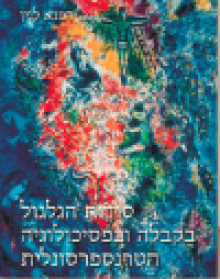
The mystery of reincarnation in Kabbalah and transpersonal psychology: the doctrines of the soul, of reincarnation, of karma and of healing the soul
SummaryThe Mysteries of Reincarnation in Kabbalah and Transpersonal Psychology introduces to the reader the twin fields of research of Dr. Daphna Levin, and addresses such topics as the doctrine of the soul, the doctrine of reincarnation, of karma, and of soul-rectification and healing in both Kabbalah and the area of Transpersonal psychology that deals with past-life regression and research into an individual’s previous incarnations. The author examines these theories through the acute lenses of philosophy, religious-Jewish theology, esotericism, myth and history, on the one hand, and from the theoretical, scientific and transpersonal, regression therapy perspective, on the other.
Dr. Levin’s work is incomparably deep, original, creative and broad-minded. It is the first interdisciplinary work of its kind that examines, with depth and clarity, the relationship of the Kabbalistic theories of reincarnation with those of the branch of Transpersonal Psychology that investigates the various incarnations of the human soul. In my opinion, this ground-breaking work, written in a clear and lucid style, grants us a new understanding of the mystery of reincarnation in Kabbalistic texts, at the same time as it serves as an important signpost in man’s eternal search to know himself and understand the mystery of his own soul.
Dr. Avraham Elqayam
Director Shlomo Mousaieff Center for Research in Kabbalah
Bar-Ilan University.
Dr. Daphna Levin is a senior research fellow at the Shlomo Mousaieff Center for Research in Kabbalah, at Bar-Ilan University. She is involved in the research and practice of the contemporary, psychological discipline known as Transpersonal Reincarnation Therapy.
-
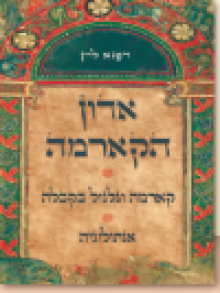
Lord of Karma
Summary“The world is sustained through mystery alone. ” said Rabbi Abba in the Zohar. The need to control one’s life through the acquisition of knowledge, in order to better deal with the unknown, with uncertainty, and perhaps even with death; the need to know and understand oneself – these drive man’s endless attempts to decipher the mystery of God’s ways and providence. For only knowledge can lead to such revelation and grant a person true strength and liberation. This is a journey that touches the hem of God's robe.
At the heart of this ethnographic study are two closely related concepts in Jewish esotericism, both shedding light upon the same mystery: reincarnation and karma. Part One of this volume is theoretical, and is comprised of three introductory sections. The first examines the concept of karma in Far Eastern religions, as well as those disciplines and schools of thought that imported the idea and systematically developed it in the West: Theosophy, Anthroposophy and Transpersonal Psychology.
The subsequent introductions examine the Kabbalistic understanding of reincarnation and karma through the lenses of philosophy, religious-Jewish theology, esotericism, myth and history, and lucidly explain their underlying principles and perspectives, the various manifestations of positive and negative karma, and the nature and various manifestation of reincarnation.
The second part of the anthology is experiential. That is, through a collection of stories, the reader is introduced to the living experience of reincarnation and karma. The stories richly illustrate the central motives of the doctrines of karma and reincarnation, and how they function as unparalleled tools in the man’s eternal odyssey to know himself and understand the mystery of his soul. The texts are drawn from the corpus of Kabbalistic and Hasidic writings, hagiographic works, and numerous other sources.
Dr. Daphna Levin is a senior research fellow at the Shlomo Mousaieff Center for Research in Kabbalah, at Bar-Ilan University. She is involved in the research and practice of the contemporary, psychological discipline known as Transpersonal Reincarnation Therapy.



